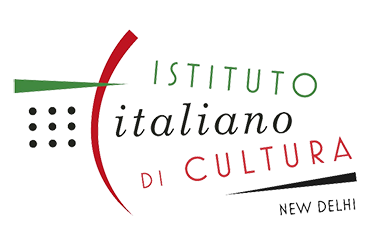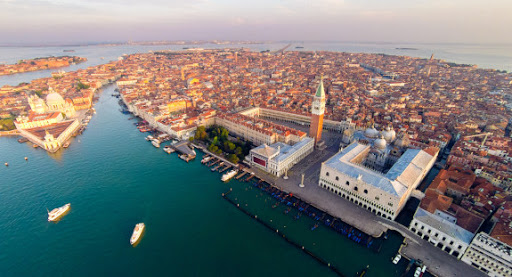Veneto 2: Let’s continue the exploration of this region by visiting the cities of Treviso, Padua, Rovigo, and of course, Venice.
Veneto 2
After our first tour in Veneto, it is now time to continue the exploration of this region by visiting the cities of Treviso, Padua, Rovigo, and of course, Venice.
Treviso
Due to its proximity with Venice, which attracts the biggest flaws of tourists, Treviso is not as known at the international level. But it is a very enchanting city, peaceful and calm, a joy to visit and to relax in.
Our walk starts from Piazza dei Signori, Lords’ square, the historic center of Treviso. Here, the impressive Palazzo del Podestà, Palazzo dei Trecento, and the Torre Civica coexist with bars, restaurants and shops.
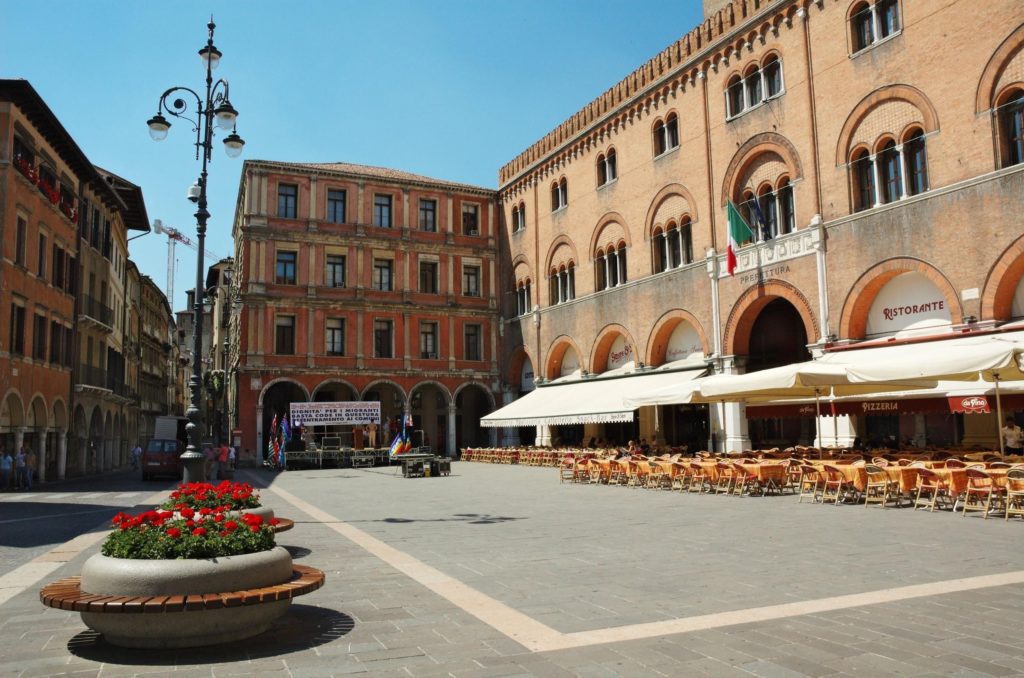
Let’s focus on Palazzo dei Trecento, among the most important testimony of Romanesque architecture. Its name, the 300’s Palace, derives from the three hundred members of the city council that used to gather for their meetings. The building, designed by the Venetian architect Gabriele Saccon and erected in the 13th Century, is characterized by three huge arcs in the lower floor, three triple mullioned windows in the upper floor, and the use of red bricks for all its sides.
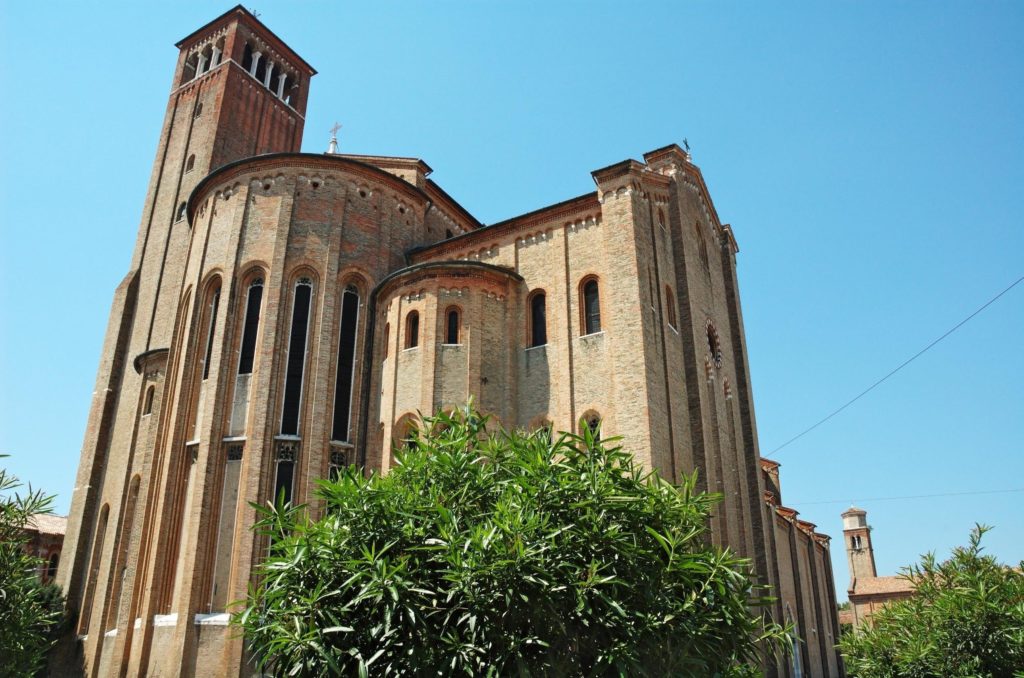
The biggest place of worship in the city is the church of Saint Nicolò. It was built during the 12th Century by the Dominican Friars.
The building charmes the visitors through its Gothic architecture style, characterized by elongated shapes and simplicity. In the interior, worth to note are the beautiful frescoes on the columns, realized by Tomaso da Modena in the 15th Century.

Walking around Treviso, you will notice the beautiful canals that flow in the center of the city. Take a minute to stop on Ponte Dante (Dante’s bridge), and enjoy the calmness of the view.
One of the most typical dishes in Treviso’s tradition is a simple one, pasta with beans. It is a concentrate of flavours loved by the Trevisans.

Another fundamental ingredient in the kitchens of the province is radicchio. Characterized by long red crunchy leaves, Trevisan radicchio is so good it has become the protagonist of many different recipes, like risottos, lasagna, or marvellous salads.
Even if the real origin of tiramisù is uncertain, some traditions claim that this super famous italian dessert was invented in Treviso in the 50s. Real pleasure for the palate, tiramisù is made by alternating layers of savoiardi biscuits soaked in coffee with a mix of mascarpone cheese and egg yolks. This sweet ‘lasagna’ is then topped with a generous amount of cocoa powder.

Padua
Padua is the third city for the number of inhabitants in Veneto, and is considered to be one of the oldest in the whole North of Italy. The historians claim that it must have been founded between the 13th and the 11th Century BC.
It became an important economic and cultural center. Some of its main monuments, like the Scrovegni Chapel with Giotto’s majestic frescoes, have deeply influenced future Western artistic movements.
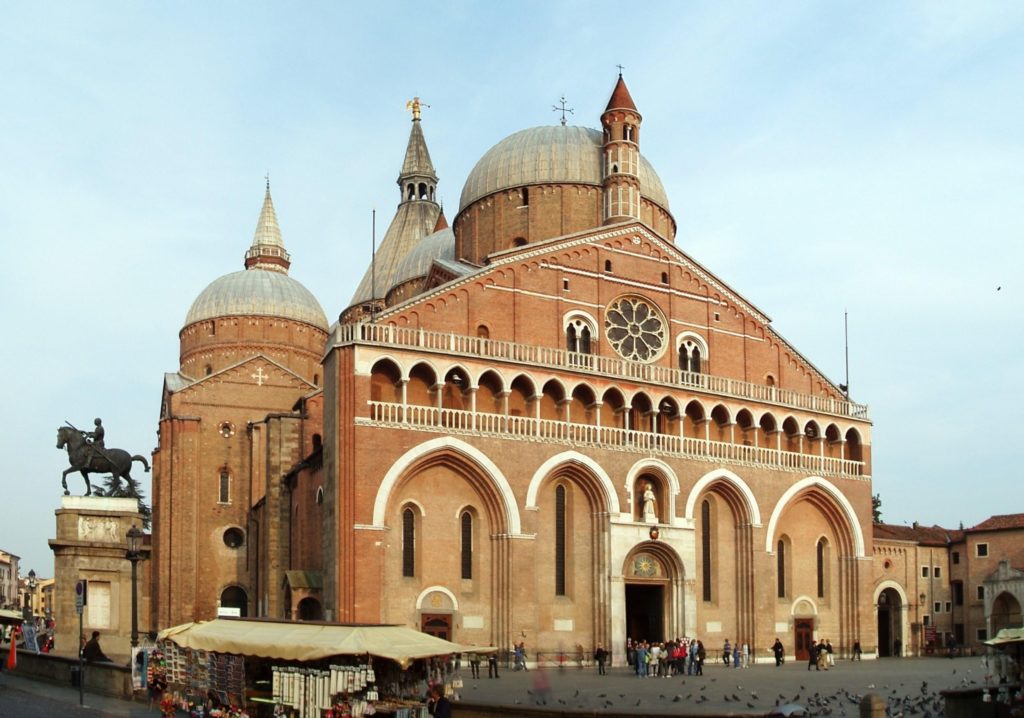
The city is also known for being an important pilgrimage destination for Christians. In fact, it hosts the remains of Saint Anthony. Let’s start our tour from the Basilica dedicated to Padua’s patron Saint.
The building, whose construction started in 1310, includes different artistic styles due to the many renovations it experienced over the centuries. The main highlight is the huge Romanesque facade, while in the interior of the church it is possible to admire beautiful paintings from major Italian artists.
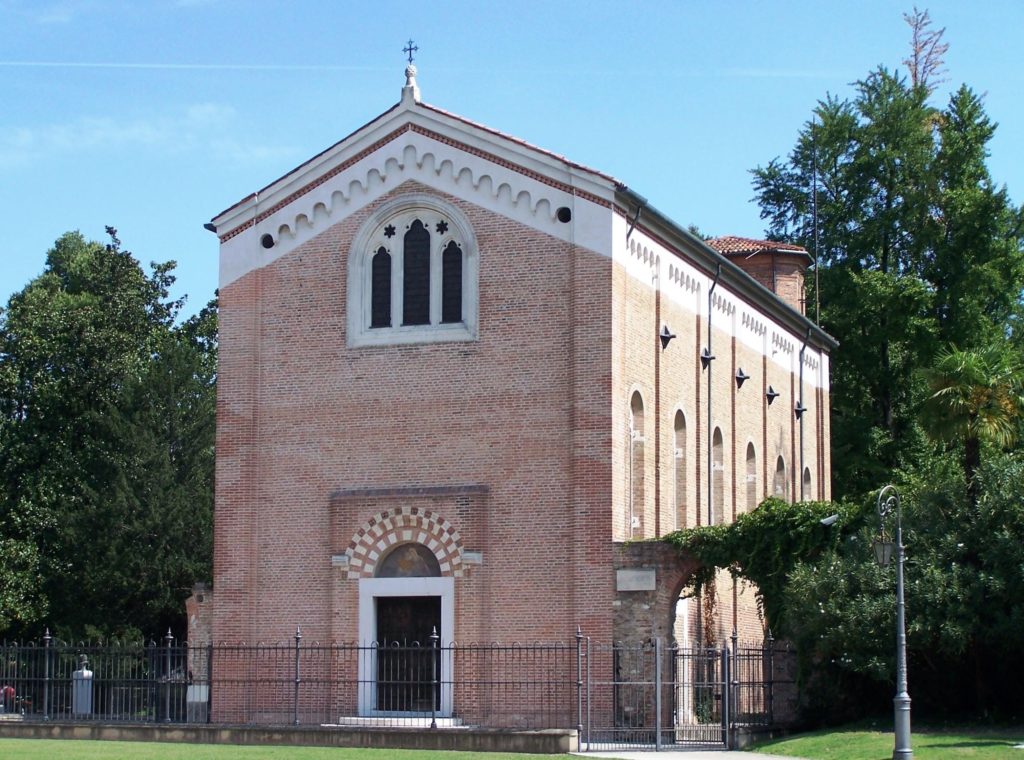
But the main attraction of the city is for sure the Scrovegni Chapel, also known as the Arena Chapel. From outside it could appear as a simple family chapel. But in its interior it is preserved one of the most important frescoes cycles in the world.
After receiving the assignment in 1303 from the banker and politician Enrico Scrovegni, Giotto completed the work in only two years.

The murals consist of 39 scenes about the events in the life of Jesus Christ and of the virgin Mary. Of the series, the masterpiece is considered to be the Lamentation of the Death of Christ.

It’s now time to move to Piazza delle Erbe, the central square of Padua, one of the largest markets in Italy. In the middle of the square stands the majestic Palazzo della Ragione: the lower floor is dedicated to the market, while the upper layer was used as town hall and justice palace.

Another impressive point of interest is Prato della Valle. It is one of the largest squares in the world, and it is simply majestic. It consists of a big central islet, called Isola Memmia, surrounded by a 1.5 km canal and two rows of 78 statues of famous people from the past.
Thanks to four bridges it is possible to reach the central islet. It is an amazing place where to have a walk, or ride a bike with the nice weather.

Padova has a long and rich gastronomy tradition. Visiting the city it is impossible not to notice all the restaurants and bars offering bigoli. It is a traditional shape of fresh pasta, made with flour, eggs and water. They are similar to spaghetti, but shorter and much thicker. The first traces of the production of bigoli in Padova date back to the 17th Century. They are seasoned with a wide range of sauces, vegetarian and non.

As for dessert, the most traditional recipe is Torta Pazientina. It is made by alternating layers of sponge cake soaked in rum with eggnog cream. The cake is then topped with chocolate chips.
Rovigo
Rovigo is located in the Southern part of Veneto, at the border with Emilia-Romagna. At first sight it is a small and calm town, but it hides many interesting monuments and testimonies of its important history.

The main attraction of Rovigo is the church dedicated to the Blessed Virgin. The building is known as La Rotonda, which means ‘rounded’, due to its characteristic octagonal structure. The church was erected between the 16th and the 17th Century as the perfect place to preserve a fresco of a Madonna and Child.
The external columnade is majestic, while in the interior of the building there is an astonishing altar from 1607.
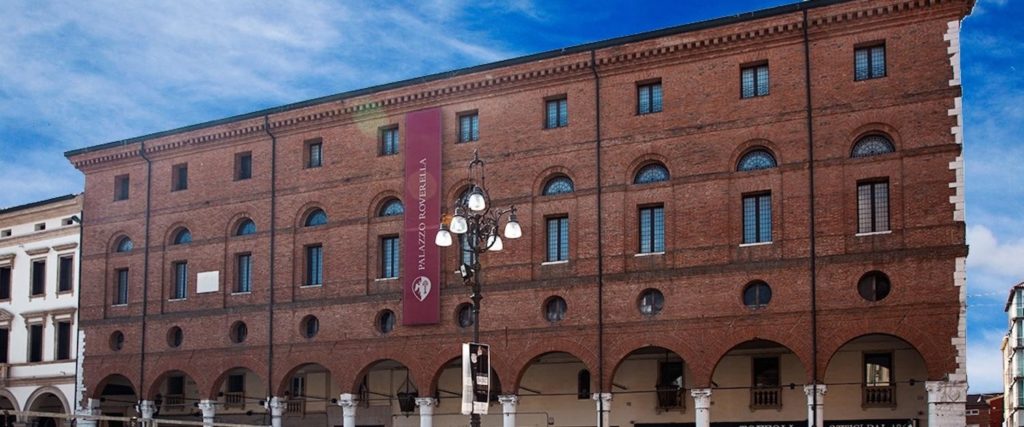
Let’s now move to Palazzo Roverella, a beautiful palace which stands in the central Vittorio Emanuele II square. It was commissioned in 1474 by Cardinal Roverella to celebrate his family.
Nowadays the building is used as an exhibition center, and hosts an important Art Gallery and pieces of Archaeological interest from the Romans, Ancient Greeks and Etruscans.

Being located in the Regional Natural Park of Po delta, water courses have always been of extreme importance for Rovigo’s inhabitants. That’s why in the city exists a museum dedicated to the large Italian rivers, Po and Adige. The exhibition traces the testimonies of life in the area since the first settlements.
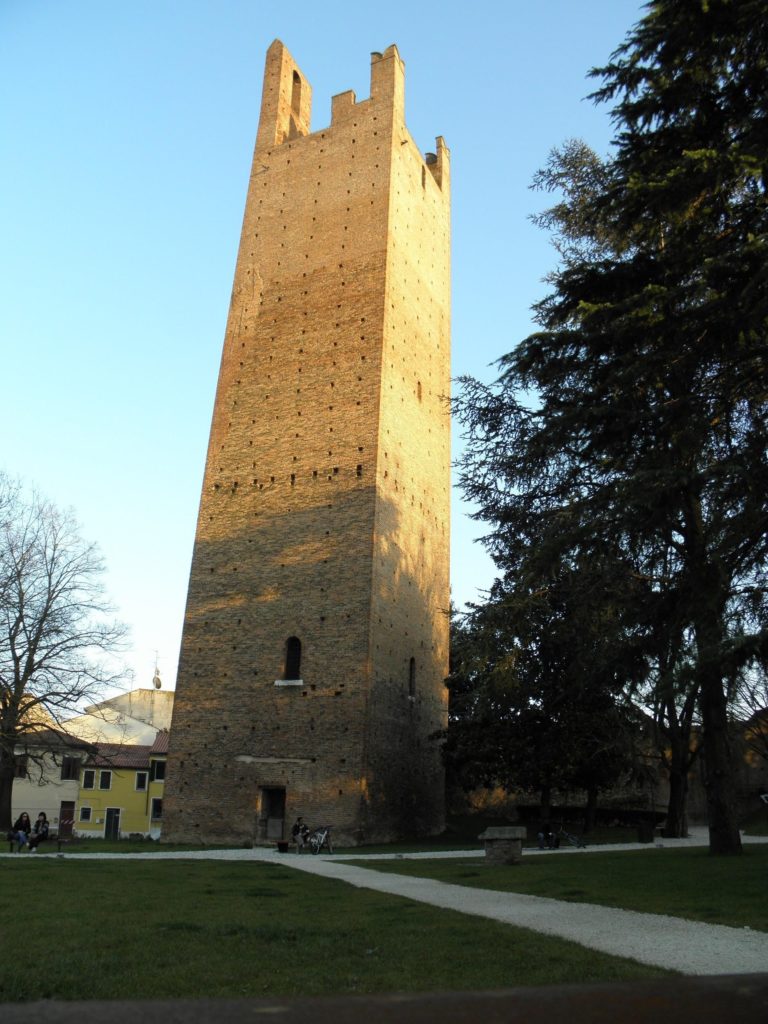
In Rovigo still stand two pending towers, called Donà and Grimani. They belonged to the ancient medieval castle which protected the city. Some remains of the fortified walls are still visible, like the San Bortolo door.
Rovigo’s typical gastronomy is characterized by simple but really tasty dishes realized with the ingredients it was possible to find in the territory.
One of the stars here is the eel, a widely diffused fish in the rivers around Rovigo. It is cooked in many different recipes, also in risottos.
Venice
Who doesn’t know Venice? It is one of the most famous cities all over the world, protagonist of hundreds and hundreds of movies, paintings, books and songs. Every year a huge flow of tourists (around 20 million people) visit the city; but next to the classic touristic paths and point of interests, Venice also offers many pleasant surprises.
Of course, once in Venice it is mandatory to check all the monuments that make the city so famous.

Starting from the majestic Piazza San Marco. It is a huge square, surrounded by beautiful porticos, bars and restaurants. All the buildings overlooking the square are elegant and show the typical Venetian architecture style.
Among them there is the San Marco Basilica. The main place of worship of the city, and one of the most important of Christianity, preserves the relics of the Saint that, according to the legend, were stolen by two Venetian merchants in Alexandria.

The current building was erected in the 11th Century. The decorations in the interior of the Basilica are simply astonishing. All the walls and the roofs are covered in beautiful golden mosaics.
Impressive is also the Basilica’s campanile. After its collapse in 1902, the 98.6 meters high bell tower was completely reconstructed ten years later. Being the tallest structure in Venice, the campanile was originally used as watchtower for checking all the ships approaching the city.
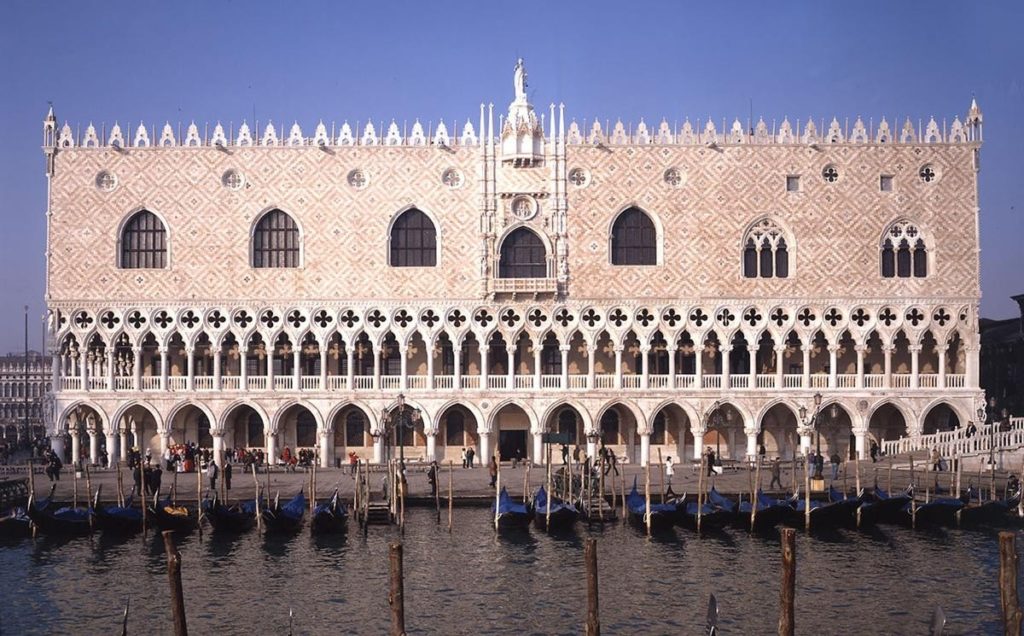
In San Marco square it is also possible to see the Doge’s Palace. The building, characterized by the Venetian Gothic architecture style, was the residence of the supreme political authority of the former Venetian Republic, the Doge. Built in 1340, the Palace received many restorations and extensions over the centuries, and it is now used as a museum.

One of the main distinguishing marks of Venice are its bridges. They are 354, and are necessary to connect streets and neighborhoods separated by the canals. The most important of them is the Ponte di Rialto. Thanks to its position in the Canal Grande, the biggest canal in the city, it is one of the most suggestive spots from where to take a picture of Venice. The bridge was realized in 1593, when it replaced the ancient pontoon bridge.

After seeing those and the other main landmarks of the city, it is now time to discover the other beauties offered by Venice. And to do that, we should enter inside the amazing palaces of the city. Starting from the Gallerie dell’Accademia, which preserves the richest collection of Venetian and Veneto’s paintings, from the 13th Century to Renaissance.
Among others, in the Gallerie is possible to admire pieces from Bellini, Veronese, Tintoretto, Tiziano and Tiepolo. In the museum is also stored The Vitruvian Man, the famous drawing by Leonardo Da Vinci.
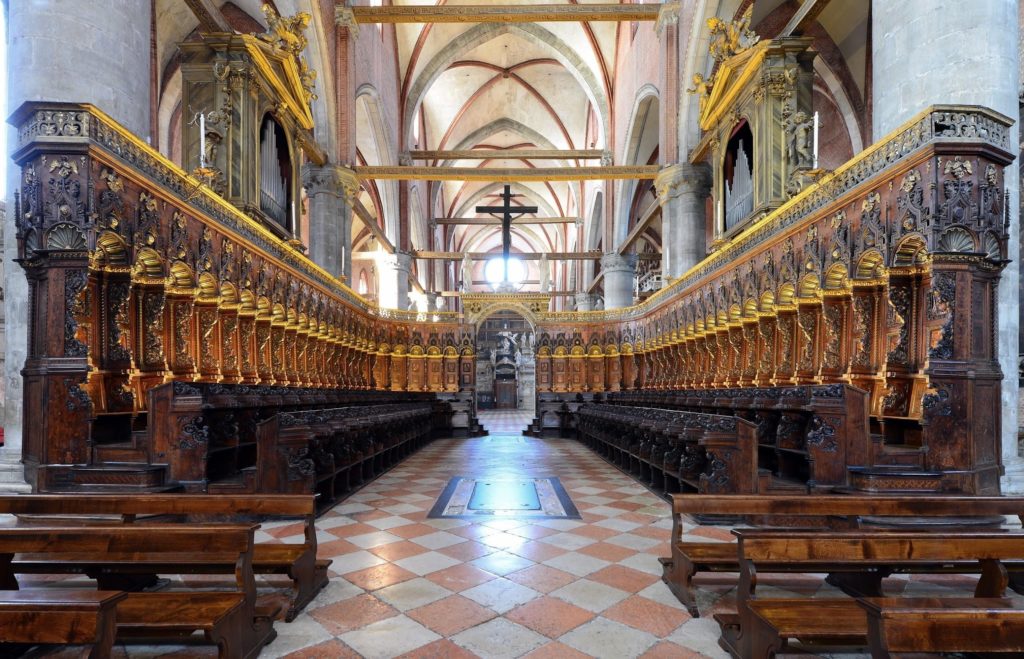
Another place usually forgotten by rushing tourists is the Basilica dei Frari. It is a monumental 102 meters long church which hosts a fantastic art collection. The masterpiece is the Assumption of the Virgin by the Renaissance Italian artist Titian. It is a huge altarpiece panel painting in oils located in the apse of the church.

And for the appassionate of the 20th Century art, the perfect destination is the Peggy Guggenheim museum. It hosts the most important collection of European and American art of that period, with works by Pollock, Picasso, Kandinsky, Duchamp and de Chirico. Astonishing is also the location of the museum: it is hosted in an unfinished palace, Palazzo Venier dei Leoni, which overlooks the Canal Grande.
After a deep immersion in Venice’s beauty, it is now time to relax and taste its fantastic gastronomy. One of the most typical gastronomic experiences in the city is to have cicchetti. They are traditional appetizers, mainly bruschettas, accompanied by a glass of wine, or Spritz, a cocktail made with wine and soda water.
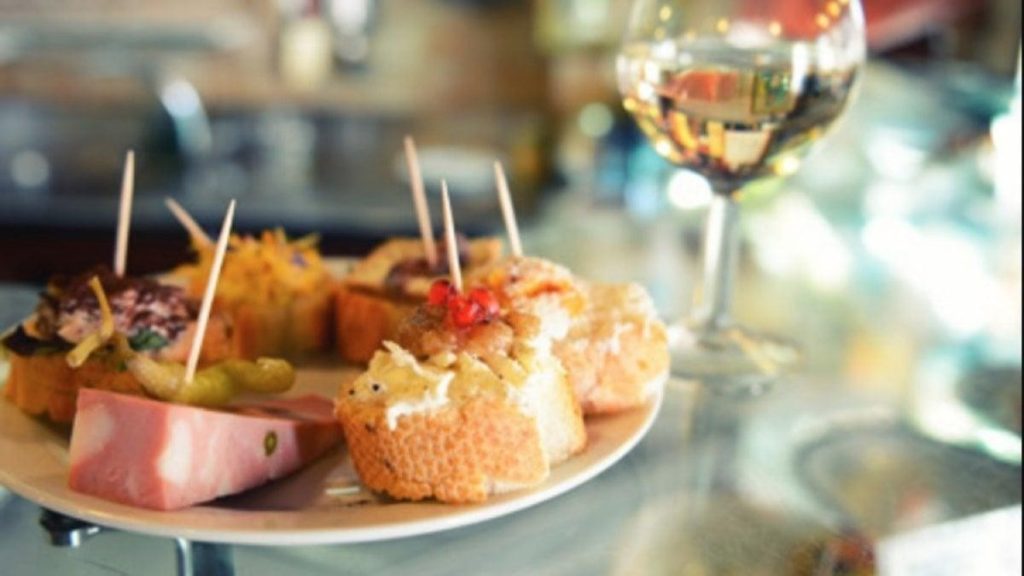
Among the first courses there is risi e bisi, a risotto with green peas that can be found in any Venetian restaurant.
